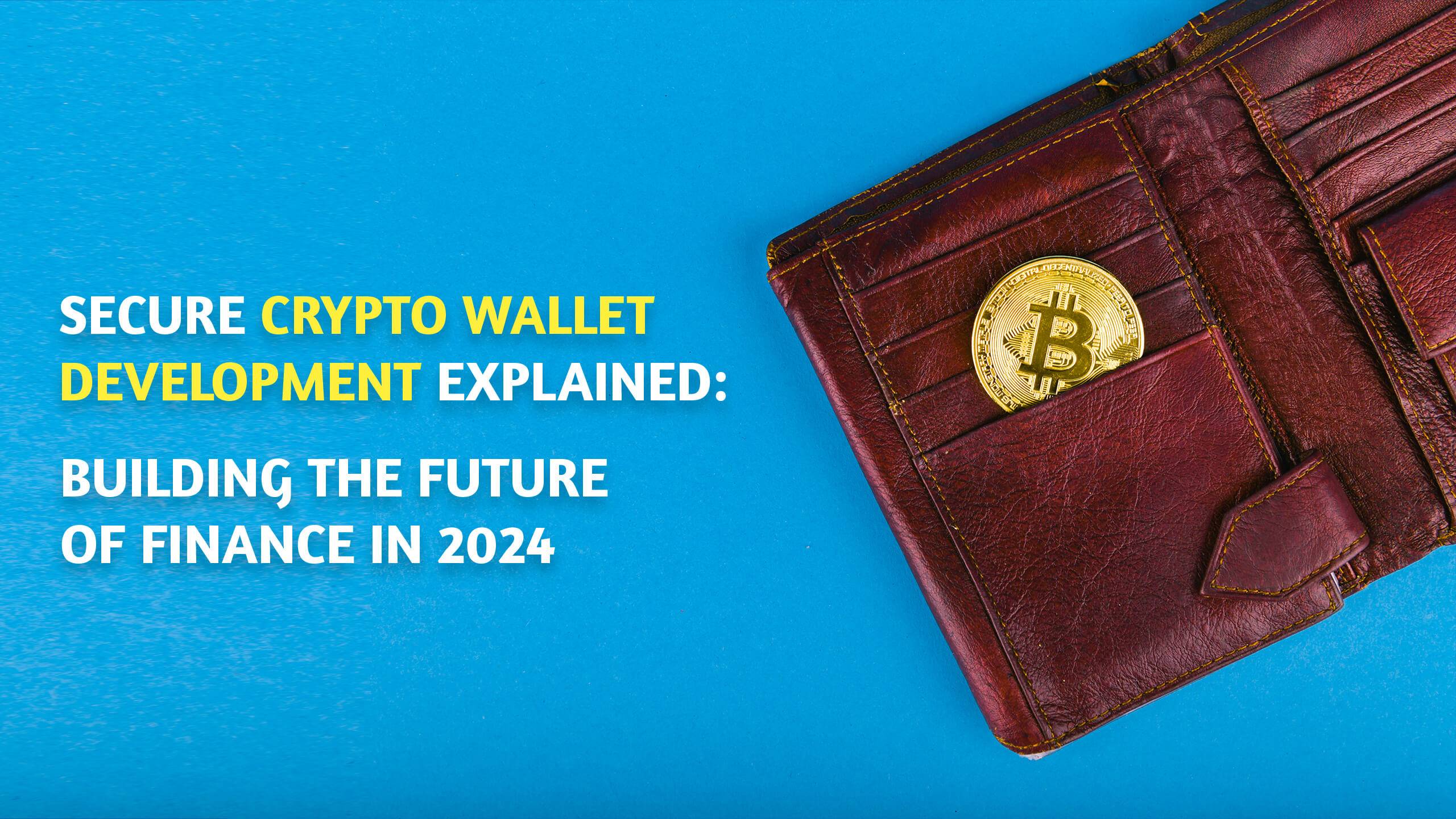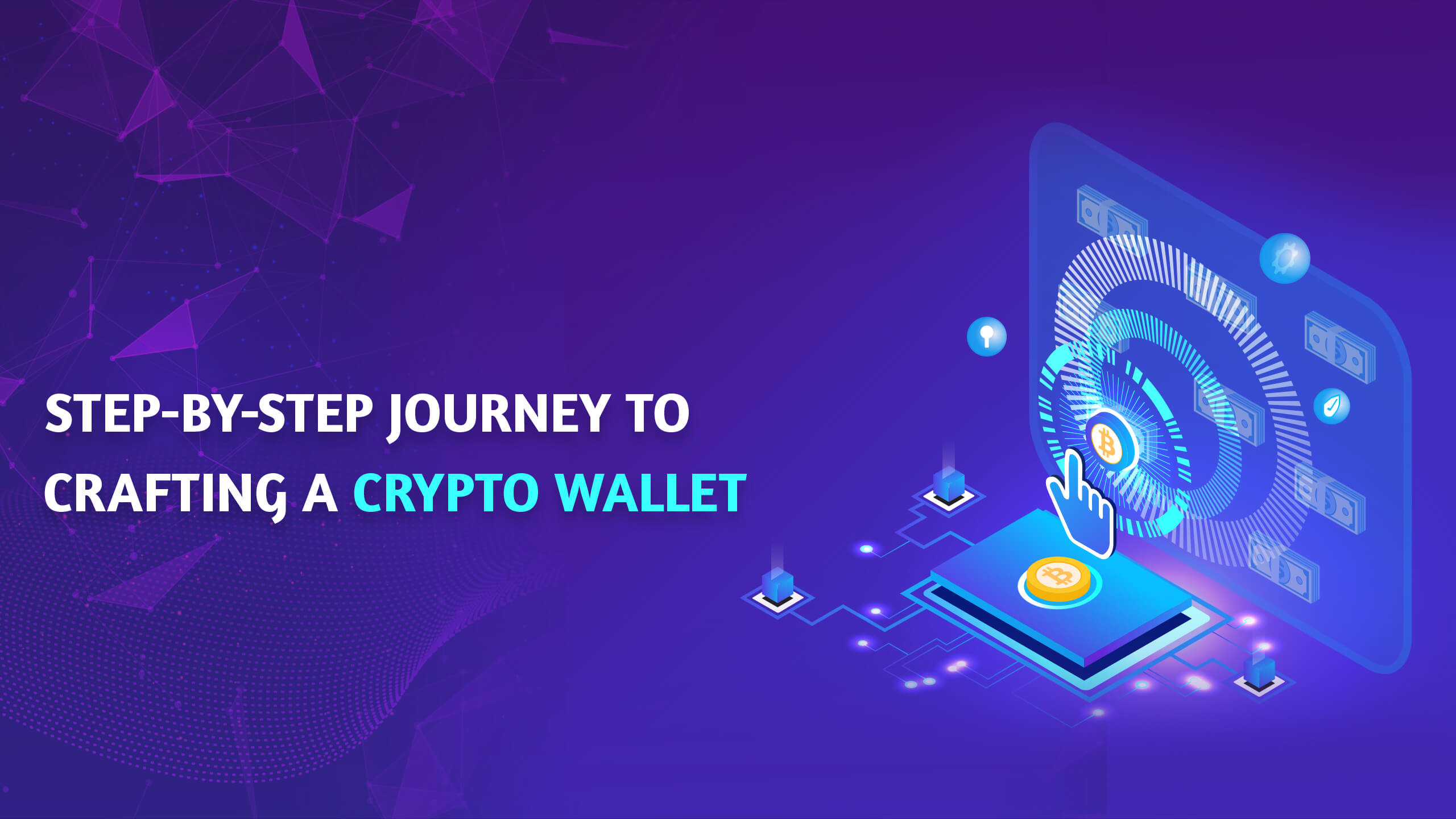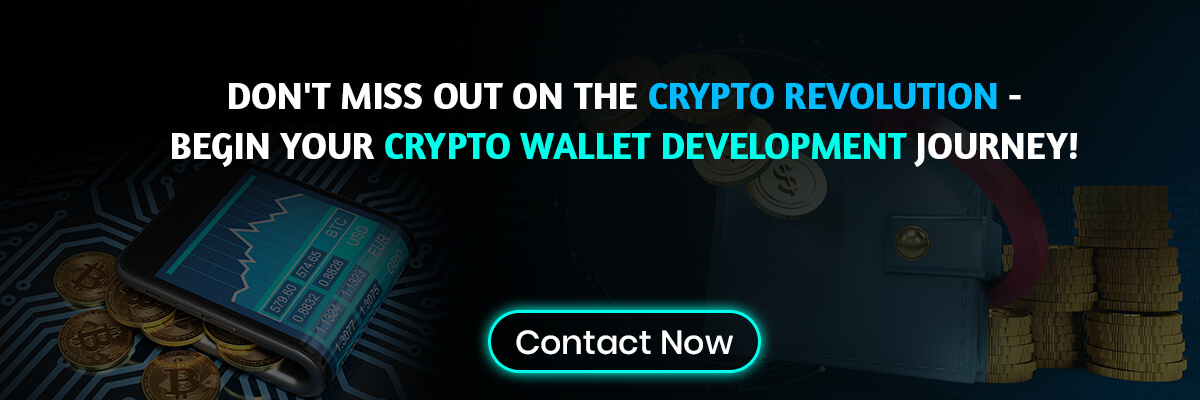Introduction to Crypto Wallets
A Brief History of Cryptocurrencies
The concept of digital currencies emerged in the 1980s, but it wasn’t until the creation of Bitcoin in 2009 that the world entered the era of cryptocurrencies. Bitcoin’s decentralized and secure nature paved the way for a new asset class, attracting investments and sparking the development of various other cryptocurrencies, and subsequently, the crypto wallet development industry to manage and store these digital assets.
What is a Crypto Wallet?
Unlike traditional wallets that hold physical cash or cards, a crypto wallet is a software application, hardware device, or online service used to manage and store cryptocurrencies. It doesn’t hold the actual cryptocurrency itself, which resides on a blockchain network. Instead, it stores the crucial cryptographic keys needed to interact with your cryptocurrency holdings and perform transactions.
Importance of Crypto Wallets in the Digital Economy
Crypto wallets play a vital role in the digital economy by enabling individuals to:
- Securely store their cryptocurrencies: Crypto wallets provide a safe and convenient way to store crypto assets, protecting them from unauthorized access.
- Send and receive cryptocurrencies: Wallets facilitate easy and efficient transfer of cryptocurrencies between individuals or businesses.
- Interact with decentralized applications (dApps): Many dApps require a crypto wallet to connect and access their functionalities, expanding the use cases of crypto beyond just financial transactions.
Understanding the Types of Crypto Wallets
Crypto wallets can be broadly categorized into two main types based on their connection to the internet: hot wallets and cold wallets. Each type offers different levels of security and convenience, making it crucial to understand their distinctions when choosing a wallet for your needs.
Hot Wallets vs. Cold Wallets: Key Differences
| Feature | Hot Wallets | Cold Wallets |
| Internet Connection | Always connected online | Offline storage, only connected for transactions |
| Convenience | More user-friendly and accessible | Less convenient, requires a manual connection for transactions |
| Security | More susceptible to hacking attempts | More secure due to offline storage |
| Examples | Mobile wallets, web wallets, desktop wallets | Hardware wallets, paper wallets |
Software Wallets: Functionality and Security Features
- Widely available: Apps for smartphones and computers, offering easy access and user-friendliness.
- Diverse functionalities: Many offer features like sending/receiving crypto, tracking portfolio performance, and interacting with dApps.
- Security considerations: While convenient, they are more vulnerable to online attacks due to their constant internet connection. Implementing strong passwords, two-factor authentication, and keeping software updated are crucial security measures.
Hardware Wallets: Advantages and Best Practices
- Enhanced security: Store private keys offline, significantly reducing the risk of online hacking.
- Physical device: Offer a tangible feel and greater control over your crypto assets.
- Best practices: Use reputable brands, maintain the physical security of the device, and keep the firmware updated for optimal security.
Paper Wallets: How They Work and Their Security Measures
- Offline storage: Private keys are printed on paper, offering maximum security when stored offline.
- Limited functionality: Primarily used for long-term storage, not ideal for frequent transactions.
- Security concerns: Vulnerable to physical damage or loss, requiring careful handling and backup procedures.
Fundamentals of Crypto Wallet Development
Developing a secure and user-friendly crypto wallet requires a strong understanding of its core components, the technical infrastructure, and essential security protocols.
Core Components of a Crypto Wallet
- Cryptographic keys: The foundation of any crypto wallet is a pair of cryptographic keys – a private key and a public key. The private key is used to sign transactions, proving ownership of the funds, while the public key allows others to verify the transaction’s authenticity.
- Key management system: This component securely stores and manages the user’s private key, ensuring its protection from unauthorized access. Different wallets employ various key management techniques depending on their security model.
- User interface (UI): The UI provides a user-friendly platform for individuals to interact with their wallets. It allows users to view their holdings, initiate transactions, and manage their account settings.
- Transaction processing: This component facilitates sending and receiving cryptocurrencies by interacting with the relevant blockchain network. It involves composing and signing transactions, broadcasting them to the network, and monitoring their confirmation.
Programming Languages and Technologies Used in Development
The specific languages and technologies used in crypto wallet development can vary depending on the chosen platform and desired features. However, some commonly used options include:
- Programming languages: Python, Java, C++, JavaScript
- Blockchain frameworks: Bitcoin Core, Ethereum libraries (Web3.js), Hyperledger Fabric
- Security libraries: OpenSSL, Bouncy Castle
- Mobile development frameworks: React Native, Flutter
Security Protocols and Encryption Techniques
Security is paramount for any crypto wallet. Developers implement various protocols and techniques to safeguard user funds and prevent unauthorized access:
- Secure key storage: Utilizing encryption algorithms and secure hardware enclaves to protect private keys.
- Multi-factor authentication (MFA): Adding an extra layer of security by requiring additional verification beyond just a password.
- Regular security audits and updates: Proactively identifying and addressing vulnerabilities in the system through continuous testing and updates.
Step-by-Step Guide to Developing a Crypto Wallet
Are you interested in creating your own cryptocurrency wallet? Whether you’re a seasoned developer or just starting out, building a crypto wallet requires careful planning and execution. Here a detailed steps to help you navigate through the process step by step:
Market Research and Identifying Target Audience
Start by conducting thorough market research to understand the needs and preferences of potential users. Identify your target audience and analyze their behavior, expectations, and pain points related to cryptocurrency wallets. This information will help you tailor your wallet to meet the specific needs of your users.
Designing User Interface and User Experience (UI/UX)
The user interface and experience play a crucial role in the success of your crypto wallet. Design an intuitive and visually appealing interface that makes it easy for users to navigate and perform tasks. Focus on simplicity, clarity, and accessibility to ensure that users of all levels can comfortably interact with your wallet.
Backend Development: Setting Up the Infrastructure
Establish a solid backend infrastructure to support the functionality of your crypto wallet. This includes setting up servers, databases, and network configurations to handle transactions, store user data securely, and interact with the blockchain network. Choose reliable and scalable technologies to ensure the smooth operation of your wallet.
Integrating Blockchain APIs and Protocols
Integrate blockchain APIs and protocols to enable essential features such as transaction processing, address generation, and blockchain interaction. Depending on the blockchain platform you’re using (e.g., Bitcoin, Ethereum), implement APIs and protocols to ensure compatibility and seamless integration with the underlying blockchain technology.
Implementing Security Measures and Authentication Systems
Security is paramount when dealing with cryptocurrency wallets. Implement robust security measures to protect user funds and sensitive information from unauthorized access and malicious attacks. This includes encryption, multi-factor authentication, secure key management, and regular security audits to identify and address potential vulnerabilities.
Best Practices for Secure Crypto Wallet Development
Building a secure crypto wallet requires prioritizing user trust and safeguarding their digital assets. Here are some essential best practices for developers to ensure robust security:
Secure Storage of Private Keys
- Leverage industry-standard encryption algorithms: Utilize strong encryption algorithms like AES-256 or similar to protect private keys at rest and in transit.
- Implement secure hardware enclaves: Consider incorporating hardware security modules (HSMs) to provide a dedicated, tamper-resistant environment for storing private keys.
- Avoid storing private keys on servers: Never store private keys directly on online servers, as they become vulnerable to online attacks.
Multi-Signature Authentication: Enhancing Security
- Enable multi-sig transactions: This feature requires multiple signatures from different authorized parties to approve a transaction, significantly reducing the risk of unauthorized access.
- Offer flexible multi-sig configuration: Allow users to define the number of signatures required based on their security preferences and transaction value.
Regular Audits and Updates: Ensuring Long-Term Viability
- Conduct regular security audits: Partner with reputable security firms to perform regular penetration testing and vulnerability assessments to identify and address potential security flaws.
- Implement continuous integration and delivery (CI/CD): Automate testing and deployment processes to ensure timely updates and patches for vulnerabilities discovered in the codebase.
Compliance with Regulatory Standards and Legal Requirements
- Stay informed about evolving regulations: Crypto regulations are constantly evolving in different regions. Stay updated on relevant regulations and adapt your wallet features accordingly.
- Implement Know Your Customer (KYC) and Anti-Money Laundering (AML) procedures: These regulatory requirements help prevent illegal activities and maintain a compliant platform.
Challenges and Solutions in Crypto Wallet Development
Despite significant advancements, crypto wallet development still faces several challenges that need to be addressed to ensure widespread adoption and secure user experience.
Addressing Scalability Issues in Wallet Infrastructure
- Handling high transaction volume: Popular cryptocurrencies can experience high transaction volumes, causing congestion and delays in wallet operations. Developers need to design scalable infrastructure to handle increased traffic without compromising performance.
- Efficient data storage and retrieval: As user bases and transaction history grow, managing large amounts of data efficiently becomes crucial. Implementing efficient data storage solutions and optimization techniques is essential.
Mitigating Risks of Hacking and Unauthorized Access
- Constant vigilance against evolving threats: Hackers continuously develop new techniques, making it vital for developers to stay updated on the latest threats and implement robust security measures like penetration testing and bug bounty programs.
- Educating users on best practices: User education is crucial. Developers can play a role by providing clear and comprehensive security guidelines and promoting responsible practices like strong passwords and multi-factor authentication.
Ensuring Compatibility Across Multiple Platforms and Devices
- Supporting diverse user preferences: Users access their crypto wallets from various devices and platforms. Developers need to ensure their wallets function seamlessly across different operating systems and devices, including mobile, desktop, and web interfaces.
- Maintaining consistency in user experience: Providing a consistent and intuitive user experience across different platforms fosters user adoption and simplifies wallet management.
Conclusion
The world of cryptocurrencies continues to evolve at a rapid pace, and the need for secure and user-friendly crypto wallets is paramount. By understanding the different types of wallets, the core components of their development, and the best practices for security, individuals can make informed decisions about managing their digital assets.
At Web 3.0 India, we are committed to being a trusted partner in your crypto journey. We offer a comprehensive suite of services, including:
- Secure and user-friendly crypto wallet development: Our team of experienced developers leverages the latest technologies and security best practices to create reliable and accessible crypto wallets.
- Expert consulting and guidance: We provide personalized guidance and support to help you understand the intricacies of the crypto landscape and make informed investment decisions.
- Educational resources and workshops: We believe in empowering individuals with knowledge. We offer educational resources and workshops to enhance your understanding of cryptocurrencies and blockchain technology.
By combining our expertise with your unique needs, we can help you navigate the exciting world of cryptocurrencies with confidence. Contact us today to learn more about how Web 3.0 India can assist you in managing your digital assets securely and effectively.






